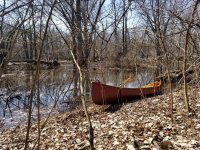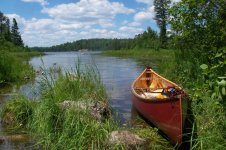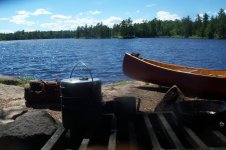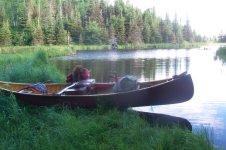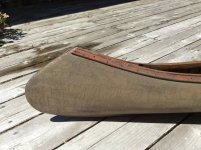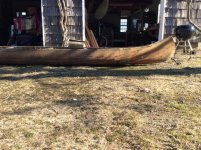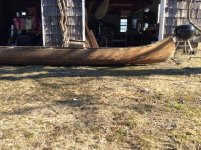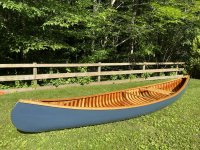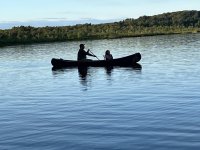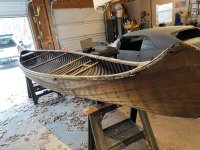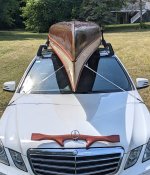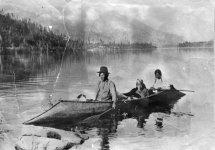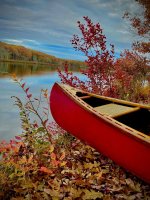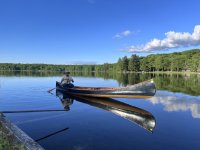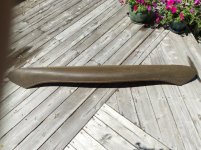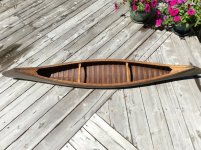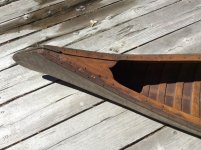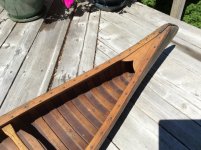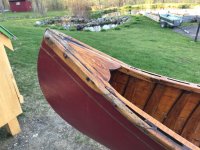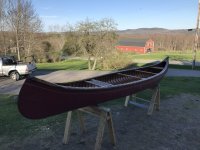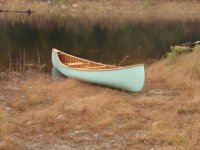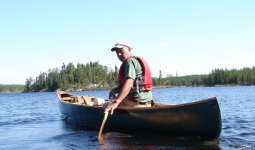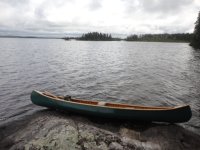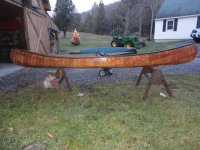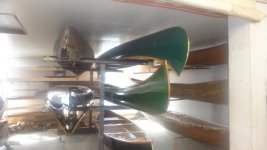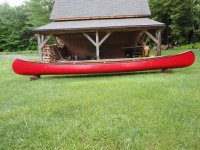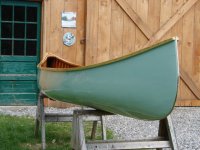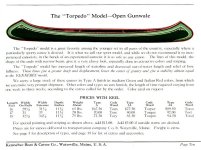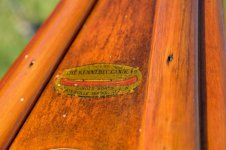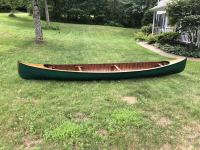I've been noticing how the stems of different wood-canvas canoes have different stem curve shapes or radii. For example, this 1916 Old Town OTCA was made for Percy Rockefeller, and its stem curve shape is close to circular.
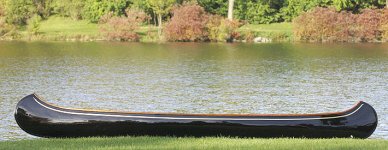
My Rollin Thurlow reproduction of a circa 1900 Morris, which I assume is very faithful to the original geometry, shows more of a slightly elliptical stem curve—sort of an inchoate "pointiness" at the nose.
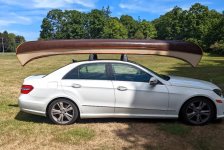
This elliptical radius pointiness seems to reach a zenith in the Old Town Molitor stems, which are sometimes referred to as torpedo shapes.
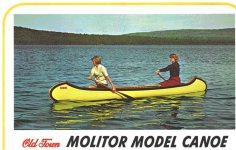
I'm looking for you wood-canvas owners to show profile pictures of your canoe's stems.
Ahhh . . . you can post profile pictures of other types of canoes, too, and maybe we can discuss aesthetic preferences or performance differences of different stem geometries.

My Rollin Thurlow reproduction of a circa 1900 Morris, which I assume is very faithful to the original geometry, shows more of a slightly elliptical stem curve—sort of an inchoate "pointiness" at the nose.

This elliptical radius pointiness seems to reach a zenith in the Old Town Molitor stems, which are sometimes referred to as torpedo shapes.

I'm looking for you wood-canvas owners to show profile pictures of your canoe's stems.
Ahhh . . . you can post profile pictures of other types of canoes, too, and maybe we can discuss aesthetic preferences or performance differences of different stem geometries.

